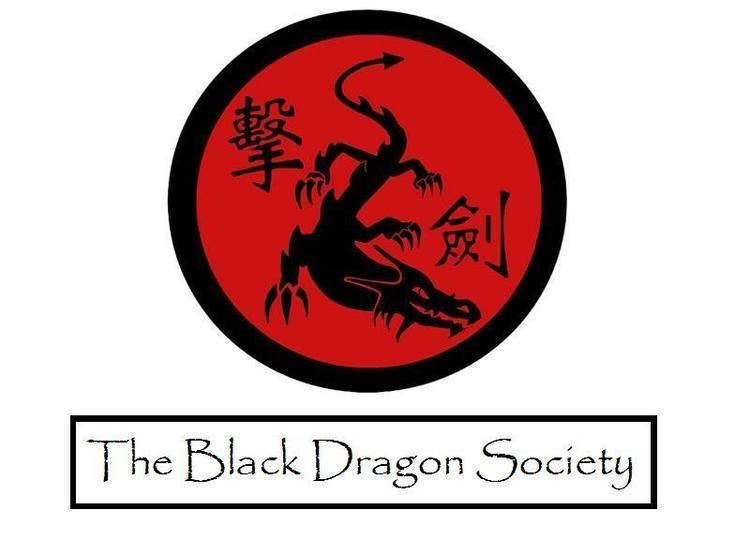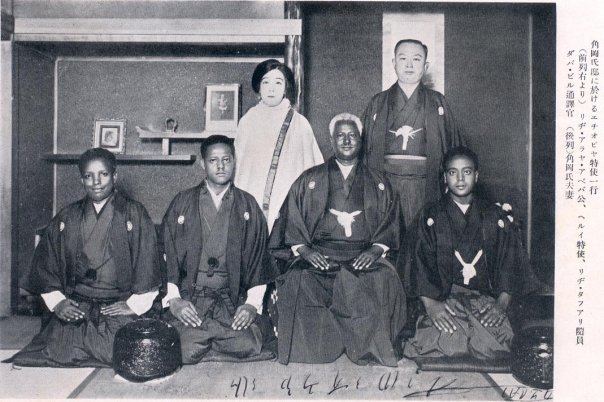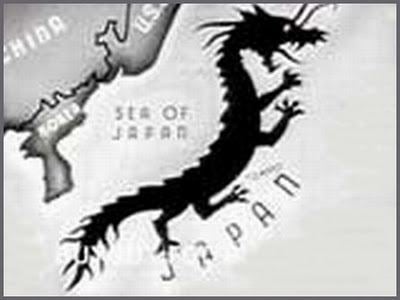 | ||
Black dragon society
The Black Dragon Society (Kyūjitai; 黑龍會; Shinjitai: 黒竜会, kokuryūkai), or Amur River Society, was a prominent paramilitary, ultranationalist right-wing group in Japan.
Contents
- Black dragon society
- Bds black dragon society 7
- History
- Activities in the United States
- In popular culture
- References

Bds black dragon society 7
History

The Kokuryūkai was founded in 1901 by Uchida Ryohei, and was descended from the Gen'yōsha (Uchida was a follower of Genyōsha founder Mitsuru Tōyama). Its name is derived from the translation of the Amur River, which is called Heilongjiang or "Black Dragon River" in Chinese (黑龍江?), read as Kokuryū-kō in Japanese. Its public goal was to support efforts to keep the Russian Empire north of the Amur River and out of east Asia.
The Kokuryūkai initially made strenuous efforts to distance itself from the criminal elements of its predecessor, the Gen'yōsha. As a result, its membership included Cabinet Ministers and high-ranking military officers as well as professional secret agents. However, as time passed, it found the use of criminal activities to be a convenient "means to an end" for many of its operations.

The Society published a journal, and operated an espionage training school, from which it dispatched agents to gather intelligence on Russian activities in Russia, Manchuria, Korea and China. It also pressured Japanese politicians to adopt a strong foreign policy. The Kokuryūkai also supported Pan-Asianism, and lent financial support to revolutionaries such as Sun Yat-sen, and Emilio Aguinaldo.
During the Russo-Japanese War, annexation of Korea and Siberian Intervention, the Imperial Japanese Army made use of the Kokuryūkai network for espionage, sabotage and assassination. They organized Manchurian guerrillas against the Russians from the Chinese warlords and bandit chieftains in the region, the most important being Marshal Chang Tso-lin. The Black Dragons waged a very successful psychological warfare campaign in conjunction with the Japanese military, spreading disinformation and propaganda throughout the region. They also acted as interpreters for the Japanese army.
The Kokuryūkai assisted the Japanese spy, Colonel Motojiro Akashi. Akashi, who was not directly a member of the Black Dragons, ran successful operations in China, Manchuria, Siberia and established contacts throughout the Muslim world. These contacts in Central Asia were maintained through World War II. The Black Dragons also formed close contact and even alliances with Buddhist sects throughout Asia.
During the 1920s and 1930s, the Kokuryūkai evolved into more of a mainstream Political organization, and publicly attacked liberal and leftist thought. Although it never had more than several dozen members at any one time during this period, the close ties of its membership to leading members of the government, military and powerful business leaders gave it a power and influence far greater than most other ultranationalist groups.
Initially directed only against Russia, in the 1930s, the Kokuryūkai expanded its activities around the world, and stationed agents in such diverse places as Ethiopia, Turkey, Morocco, throughout Southeast Asia and South America, as well as Europe and the United States.
Activities in the United States
The organization was mentioned as an influence on the black nationalist organizations which were convicted of sedition in 1942, most notably Mittie Maud Lena Gordon's Peace Movement of Ethiopia. The other two organizations said to be influenced were the Brotherhood of Liberty for the Black People of America and the Nation of Islam.
On March 27, 1942, FBI agents arrested members of the Black Dragon Society in the San Joaquin Valley, California.
In the Manzanar Internment Camp a small group of pro-Imperial Japanese flew Black Dragon flags and intimidated other Japanese inmates.
The Kokuryūkai was officially disbanded by order of the American Occupation authorities in 1946. According to Brian Daizen Victoria's book, Zen War Stories, the Black Dragon Society was reconstituted in 1961 as the Black Dragon Club (Kokuryū-Kurabu.) The Club never had more than 150 members to succeed in the goals of the former Black Dragon Society.
